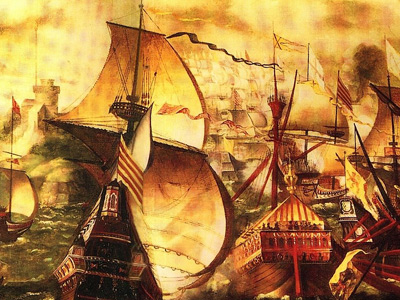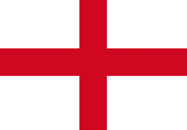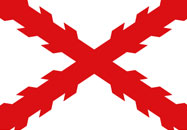Spanish Armada (1588)
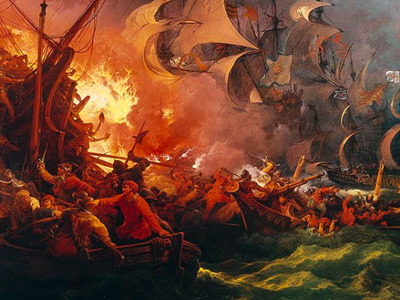
Legacy
In England, the boost to national pride from the defeat of the Spanish invasion attempt lasted for years, and Elizabeth's legend persisted and grew long after her death. Repulsing the Spanish naval force may have given heart to the Protestant cause across Europe and the belief that God was behind the Protestants. This was shown by the striking of commemorative medals that bore variations on the inscription, "1588. Flavit Jehovah et Dissipati Sunt" – with "Jehovah" in Hebrew letters ("God blew, and they are scattered"), or He blew with His winds, and they were scattered. There were also more lighthearted medals struck, such as the one with the play on the words of Julius Caesar: Venit, Vidit, Fugit (he came, he saw, he fled). The victory was acclaimed by the English The Kingdom of England was a sovereign state on the island of Great Britain from about 927, when it emerged from various Anglo-Saxon kingdoms, until 1 May 1707, when it united with Scotland to form the Kingdom of Great Britain. The Viking invasions of the 9th century upset the balance of power between the English kingdoms, and native Anglo-Saxon life in general. The English lands were unified in the 10th century in a reconquest completed by King Æthelstan in 927. as their greatest since Agincourt.
The Kingdom of England was a sovereign state on the island of Great Britain from about 927, when it emerged from various Anglo-Saxon kingdoms, until 1 May 1707, when it united with Scotland to form the Kingdom of Great Britain. The Viking invasions of the 9th century upset the balance of power between the English kingdoms, and native Anglo-Saxon life in general. The English lands were unified in the 10th century in a reconquest completed by King Æthelstan in 927. as their greatest since Agincourt.
The English attempted to press home their advantage the following year, when the Drake–Norris Expedition of 1589, with a comparable fleet of English privateers, sailed to establish a base in the Azores, attack Spain The Spanish Empire was a colonial empire governed by Spain and its predecessor states between 1492 and 1976. One of the largest empires in history, it was the first to usher the European Age of Discovery and achieve a global scale, controlling vast territory. It was one of the most powerful empires of the early modern period, reaching its maximum extent in the 18th century., and raise a revolt in Portugal. This expedition, led by Sir Francis Drake and John Norreys raided Corunna but withdrew from Lisbon after failing to coordinate its strategy effectively with the Portuguese.
The Spanish Empire was a colonial empire governed by Spain and its predecessor states between 1492 and 1976. One of the largest empires in history, it was the first to usher the European Age of Discovery and achieve a global scale, controlling vast territory. It was one of the most powerful empires of the early modern period, reaching its maximum extent in the 18th century., and raise a revolt in Portugal. This expedition, led by Sir Francis Drake and John Norreys raided Corunna but withdrew from Lisbon after failing to coordinate its strategy effectively with the Portuguese.

Elizabeth I and the Spanish Armada; the Apothecaries painting, sometimes attributed to Nicholas Hilliard. A stylised depiction of key elements of the Armada story: the alarm beacons, Queen Elizabeth at Tilbury, and the sea battle at Gravelines

Elizabeth I and the Spanish Armada; the Apothecaries painting, sometimes attributed to Nicholas Hilliard. A stylised depiction of key elements of the Armada story: the alarm beacons, Queen Elizabeth at Tilbury, and the sea battle at Gravelines
( Click image to enlarge)
Two more armadas were sent by Spain, in 1596 and 1597, but both were once more scattered by treacherous storms. The Spanish Navy underwent a major organizational reform that helped it to maintain control over its trans-Atlantic routes. High-seas buccaneering and the supply of troops to Philip II's enemies in the Netherlands and France The Kingdom of France is the historiographical name or umbrella term given to various political entities of France in the medieval and early modern period. It was one of the most powerful states in Europe since the High Middle Ages. It was also an early colonial power, with possessions around the world. Colonial conflicts with Great Britain led to the loss of much of its North American holdings by 1763. The Kingdom of France adopted a written constitution in 1791, but the Kingdom was abolished a year later and replaced with the First French Republic. continued, but brought few tangible rewards for England.
The Kingdom of France is the historiographical name or umbrella term given to various political entities of France in the medieval and early modern period. It was one of the most powerful states in Europe since the High Middle Ages. It was also an early colonial power, with possessions around the world. Colonial conflicts with Great Britain led to the loss of much of its North American holdings by 1763. The Kingdom of France adopted a written constitution in 1791, but the Kingdom was abolished a year later and replaced with the First French Republic. continued, but brought few tangible rewards for England.
The memory of the victory over the Armada was evoked during both the Napoleonic Wars and the Second World War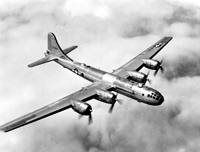 World War II or the Second World War, often abbreviated as WWII or WW2, was a world war that lasted from 1939 to 1945. It involved the vast majority of the world's countries—including all of the great powers—forming two opposing military alliances: the Allies and the Axis powers. World War II was a total war that directly involved more than 100 million personnel from more than 30 countries. World War II is generally considered to have begun on 1 September 1939, when Nazi Germany, under Adolf Hitler, invaded Poland. View World War II », when Britain
World War II or the Second World War, often abbreviated as WWII or WW2, was a world war that lasted from 1939 to 1945. It involved the vast majority of the world's countries—including all of the great powers—forming two opposing military alliances: the Allies and the Axis powers. World War II was a total war that directly involved more than 100 million personnel from more than 30 countries. World War II is generally considered to have begun on 1 September 1939, when Nazi Germany, under Adolf Hitler, invaded Poland. View World War II », when Britain The United Kingdom of Great Britain and Northern Ireland, commonly known as the United Kingdom (UK) or Britain, is a country in Europe, off the north-western coast of the continental mainland. It comprises England, Scotland, Wales and Northern Ireland. The UK became the world's first industrialised country and was the world's foremost power during the 19th and early 20th centuries. again faced a substantial danger of foreign invasion.
The United Kingdom of Great Britain and Northern Ireland, commonly known as the United Kingdom (UK) or Britain, is a country in Europe, off the north-western coast of the continental mainland. It comprises England, Scotland, Wales and Northern Ireland. The UK became the world's first industrialised country and was the world's foremost power during the 19th and early 20th centuries. again faced a substantial danger of foreign invasion.
HISTORY
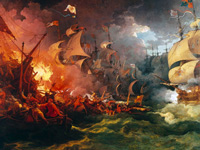
RESOURCES
This article uses material from the Wikipedia article "Spanish Armada", which is released under the Creative Commons Attribution-Share-Alike License 3.0.
© Stories Preschool. All Rights Reserved.
